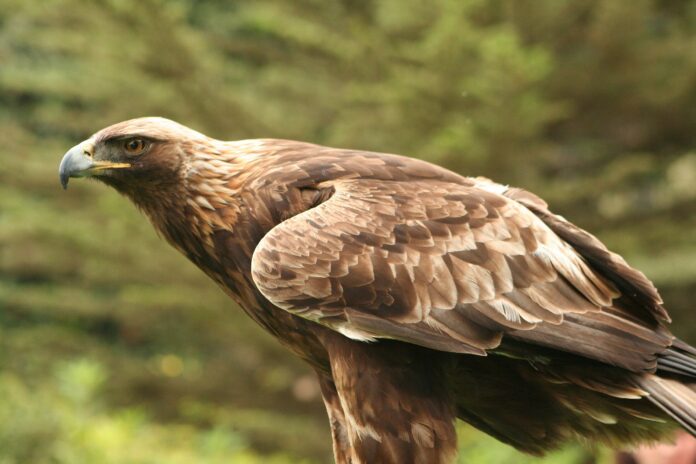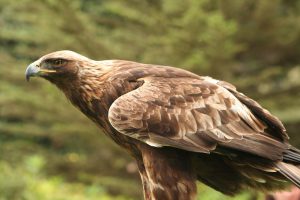
BY HARRY WEEKES

Winter represents a kind of a bird drought—a time when the great torrents of spring and summer turn into the drips and drops of a snow-covered landscape. As with all declarative biological statements, there are lots of asterisks to this. For instance, head down to Hagerman this time of year and you might find yourself saying things like this: “There were so many ducks, I could have walked across the water on their backs.” Or that’s how my brother-in-law put it when he showed up for Thanksgiving at my dad’s house. And, sure enough, if the ducks on that portion of the Snake River were stones, it would have been easy to walk across the river without even lengthening your stride.
In general, though, there are fewer birds. This makes seeing a golden eagle even more dramatic. An impressive bird at any time of the year, there is something about an absence of things that magnifies what remains.
Highway 46 is 58 miles long and connects Wendell (Hub City of Magic Valley) to Highway 20 outside of Fairfield. As importantly, it connects me to my dad’s house outside of Buhl where my family spent Thanksgiving. Driving home, it was overcast and snowing lightly; the entire landscape turned into one those great Bev Doolittle paintings.
Just shy of the magical geological section north of Gooding, we flushed a bunch of crows close to the road. And an eagle—a golden eagle—a giant bird whose wings easily eclipsed even the view of the other birds and whose great shaggy legs looked like feathered chaps.
In one of those miraculous features of our vision, there were two or three snapshots that froze in my mind as we zipped through the desert. The first words I managed were “Now that’s a bird,” by which I meant, “That is a beautiful, huge, powerful, crazy, graceful animal.” The closest I can come to the emotion I felt is “WHOOOOOOOOOOAAAAAAHHHHHHH!”
In an attempt to learn another language, I have converted as much of my peripheral world to Spanish as possible: I listen to News in Slow Spanish podcasts, read about world events on BBC Mundo, and use Kenn Kaufman’s Guía de campo a las aves de norteamérica to help me with birds. There is something powerful about other languages; they invariably provide diverse perspectives on the world. I am sure a linguist could use different languages and their various expressions for the same experiences to map out the many ways humans work to distill our interactions—interactions that are always sieved through the colander of emotion.
My purposes are more blunt, my products less elegant than a crosscultural ethnographic map. As part of my study, when I see a new bird, I write the date, location, and its Spanish name.
My Thanksgiving visit to the Snake introduced me to the trumpeter swan (cisne trompetero), snow goose (ganso blanco), American coot (focha Americana), and the canvasback (porrón coacoxtle). The snow goose is obvious; the canvasback intriguing. In relation to the golden eagle, though, I think I sense a different, more common emotional experience.
Golden eagle—águila real. Real eagle. Yep, that is an experience we’ve all had. This giant bird launching into the air. A pause, eyebrows raise. “Now that was a bird. A real bird.”
Harry Weekes is the founder and head of school at The Sage School in Hailey. This is his 47th year in the Wood River Valley, where he lives with his wife Hilary and their three kids—Georgia, Penelope and Simon—a nice little flock.
